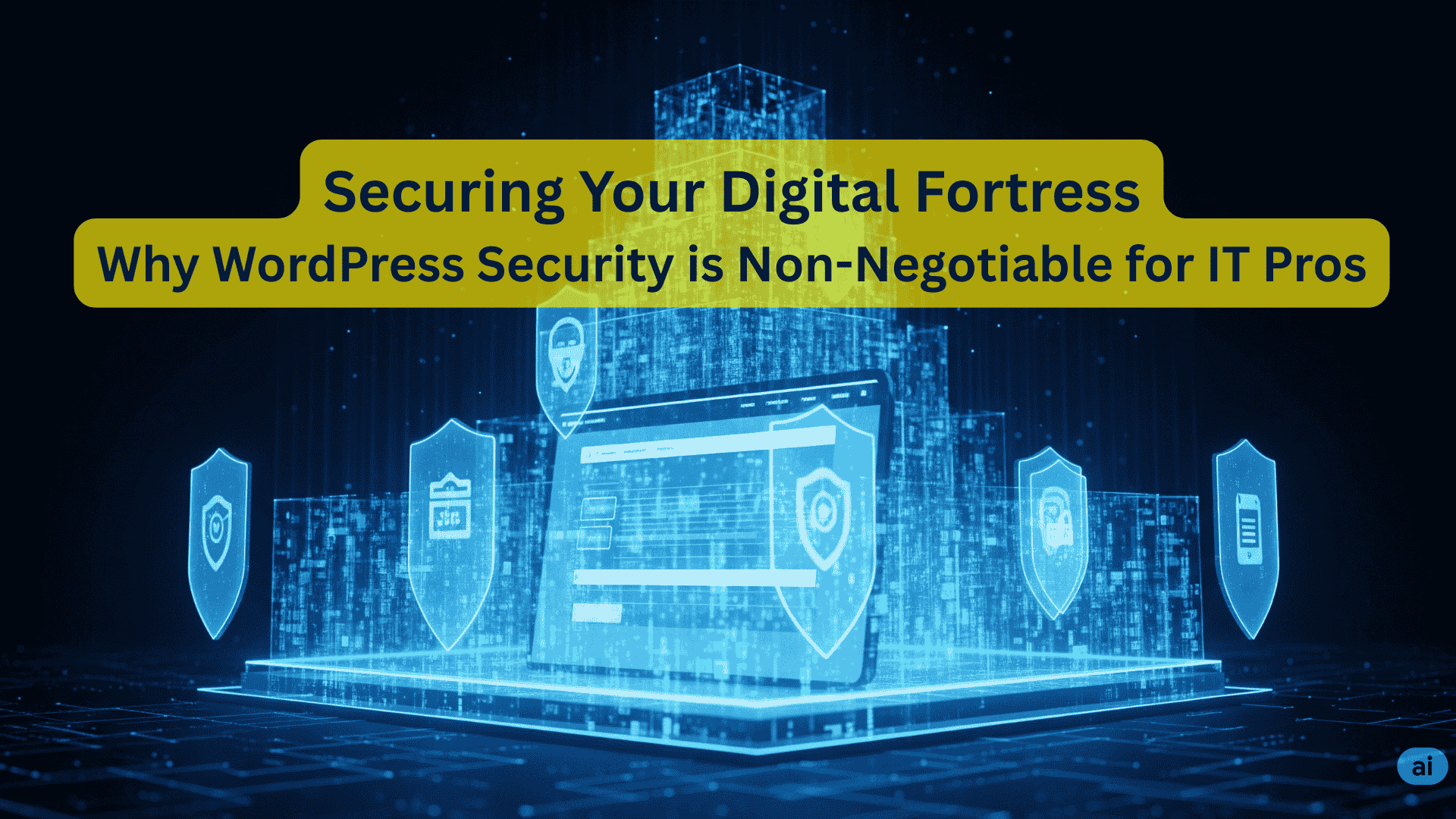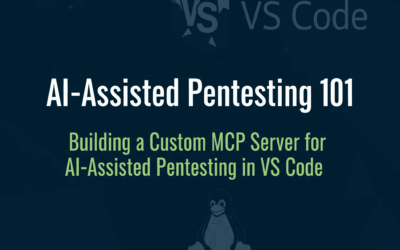Understanding the Cyber Threat Landscape
In the digital age, your website isn’t just a brochure; it’s a critical business asset, a revenue generator, and often, the first point of contact with your customers. For millions of organizations worldwide, that website runs on WordPress. While its ease of use and flexibility are unmatched, this popularity also makes it a prime target for cybercriminals.
If you’re an IT professional, you already know the stakes are high. But understanding the specific nuances of WordPress security and the ever-evolving threat landscape isn’t just important—it’s essential for protecting your organization’s digital presence and reputation.
The Elephant in the Digital Room: WordPress’s Unrivaled Dominance
Let’s talk numbers. WordPress powers over 43% of all websites on the internet. Yes, you read that right—nearly half the web. From small blogs to Fortune 500 companies, e-commerce giants to news outlets, WordPress is the engine behind a massive chunk of the online world.
So, what does this phenomenal market share mean for security? It means WordPress is effectively a massive honey pot for attackers. Malicious actors are constantly looking for the biggest return on their efforts, and developing exploits for a platform used by billions of people offers precisely that. A single vulnerability in a popular plugin or the WordPress core can potentially open doors to millions of sites. This sheer volume means that while individual sites might seem small, collectively they represent an irresistible target for cybercriminals.
Unpacking the Arsenal: Common WordPress Attack Vectors
Attackers aren’t just taking potshots; they employ a sophisticated array of techniques to compromise WordPress sites. As an IT professional, understanding these common attack vectors is your first line of defense:
- Plugin and Theme Vulnerabilities: This is arguably the most common entry point. WordPress’s strength lies in its vast ecosystem of plugins and themes, but their sheer number also introduces risk. Outdated, poorly coded, or abandoned plugins and themes often contain critical security flaws that attackers can exploit to inject malicious code, gain unauthorized access, or deface your site.
- Brute-Force Attacks: Simple yet effective, these attacks involve automated scripts attempting to guess your login credentials (username and password) repeatedly until they find the right combination. Weak or common passwords are an open invitation for these attackers.
- Cross-Site Scripting (XSS): XSS attacks involve injecting malicious scripts (typically JavaScript) into legitimate web pages. When unsuspecting users visit the compromised page, the script executes in their browser, potentially stealing cookies, session tokens, or even redirecting them to malicious sites. WordPress comments or user input fields are common targets.
- SQL Injection: This attack targets your site’s database. By injecting malicious SQL queries into input fields, attackers can trick your database into revealing sensitive information, altering data, or even granting them full control over your site’s content and users.
- Malicious File Uploads: If your WordPress site allows users to upload files (e.g., for profile pictures, content submissions), insufficient validation can enable attackers to upload harmful scripts or web shells, giving them a backdoor to your server.
- DDoS Attacks (Distributed Denial of Service): While not exclusively WordPress-specific, DDoS attacks aim to overwhelm your website’s server with a flood of traffic, making it unavailable to legitimate users. These can be launched to extort money, disrupt business, or as a smokescreen for other malicious activities.
- Phishing and Social Engineering: Attackers often target site administrators or employees with deceptive emails or messages, tricking them into revealing login credentials or installing malware.
When Good Sites Go Bad: Real-World Breach Examples and Their Business Impact
The consequences of a WordPress breach can be devastating, far beyond just a defaced homepage. Here are some real-world scenarios and their broad impact:
- Small Business Devastation: Imagine a small e-commerce store that relies entirely on its WordPress site for sales. A ransomware attack encrypts their entire database, demanding payment. Even if they pay, the downtime, loss of customer trust, and recovery costs can easily lead to bankruptcy.
- Data Breach Nightmares: A news publication’s WordPress site is compromised via an outdated plugin, leading to a data breach of subscriber information. This could result in hefty GDPR fines, legal battles, and a catastrophic loss of journalistic integrity and audience trust.
- Reputational Ruin for Large Enterprises: Even large corporations using WordPress for their blogs or specific campaigns aren’t immune. A high-profile hack that injects malware or redirects users to phishing sites can severely damage brand reputation, lead to stock price drops, and necessitate expensive public relations campaigns to regain public confidence.
- SEO Penalties and Blacklisting: Search engines like Google actively penalize or even blacklist compromised sites. This means a hacked WordPress site can disappear from search results, choking off organic traffic and crippling lead generation efforts for months, even after the security flaw is fixed.
- Supply Chain Attacks: A popular plugin with millions of installs is compromised. Attackers inject malicious code into the plugin itself, which then gets distributed to every site that updates it. This can lead to a widespread “supply chain” attack affecting thousands or even millions of websites simultaneously.
These aren’t isolated incidents. They underscore a critical truth: a compromised website is a compromised business. The costs extend far beyond immediate remediation, impacting finances, customer relationships, legal standing, and long-term viability.
Why Your WordPress Security Skills Are Indispensable
As an IT professional, you are on the front lines of digital defense. In an era where organizations increasingly rely on WordPress for their web presence, your expertise in securing these platforms is no longer a niche skill—it’s a fundamental requirement.
Here’s why your WordPress security acumen is more critical than ever:
- Risk Mitigation Specialist: You are the architect of defense. Your understanding of WordPress vulnerabilities allows you to implement proactive measures, patching potential weaknesses before attackers can exploit them. This translates directly into protecting company assets, sensitive data, and customer privacy.
- Meeting Compliance Demands: With regulations like GDPR, HIPAA, and PCI DSS (for e-commerce) becoming stricter, ensuring your WordPress sites are secure isn’t just good practice—it’s often a legal imperative. Your skills directly contribute to achieving and maintaining compliance, avoiding severe penalties.
- Strategic Asset Protection: WordPress sites often hold valuable intellectual property, customer data, and are vital for marketing and sales. You’re not just securing a website; you’re securing a core business asset that drives growth and revenue.
- Career Advancement and Demand: The demand for IT professionals with specialized cybersecurity skills, including WordPress security, is skyrocketing. Developing this expertise makes you an invaluable asset in the job market and opens doors to advanced roles and opportunities.
- From Reactive to Proactive: Instead of reacting to breaches after the damage is done, your WordPress security skills empower you to build resilient systems from the ground up, implement continuous monitoring, and conduct regular audits. This proactive stance saves your organization time, money, and reputation in the long run.
Final Thoughts: Protecting Your Digital Foundation
In an interconnected world, your WordPress site isn’t just a web address; it’s a critical component of your organization’s digital identity and operational success. We’ve explored why its massive market share makes it an attractive target for cybercriminals and dissected the common attack vectors, from vulnerable plugins to sophisticated SQL injection attempts. We’ve also seen the sobering reality of what a breach can cost—not just financially, but in terms of reputation, customer trust, and compliance penalties.
Here are the key takeaways for every IT professional:
- WordPress is a High-Value Target: Its widespread adoption means it’s constantly under the watchful eye of malicious actors. Don’t underestimate the risk simply because it’s perceived as “easy to use.”
- Vigilance Against Diverse Threats: Be aware of the multiple ways attackers can compromise a WordPress site. Proactive measures against plugin vulnerabilities, brute-force attacks, XSS, and SQL injection are non-negotiable.
- Breaches Have Real-World Consequences: From financial ruin for small businesses to severe reputational damage and legal repercussions for larger enterprises, the impact of a security lapse extends far beyond the technical fix.
- Your Expertise is the Ultimate Defense: As an IT professional, your skills in WordPress security are more vital than ever. You are the frontline defender, capable of implementing the robust security measures that safeguard your organization’s digital assets, ensure compliance, and maintain trust.
Securing WordPress isn’t just about applying patches; it’s about adopting a proactive, informed, and continuous security posture. By understanding the threat landscape and leveraging your expertise, you can transform your organization’s WordPress presence from a potential vulnerability into a resilient and secure digital fortress. The digital world is constantly evolving, and your commitment to robust cybersecurity is the cornerstone of its safety.




